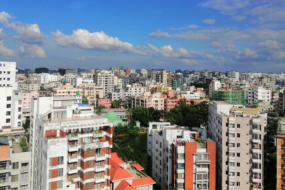Darshan Govindaraju, Director, Vaishnavi Group
India is witnessing transformational shifts in its housing preferences with a constant rise in the real estate value across metros and suburbs. This includes an increasing number of people migrating to metros for living while at the same time going for a second house in the suburbs or moving to the city outskirts to ensure a fine balance between active and peaceful living.
These evolving trends assume significance as metros historically used to be at the heart of economic activity and opportunities, thereby attracting millions of people from across the country. However, the last few decades have democratised this growth and now suburbs and smaller cities have rapidly progressed offering good infrastructure, opportunities to grow and lead a comfortable life. Suburbs in Mumbai and Bengaluru such as Andheri, Borivali, Kurla, Banashankari, Banaswadi and Basavanagudi are witnessing a rise in property values as demand from customers is increasing at a rapid pace.
The Rise of Second Homes
As people thronged to metros to lead a better life, they started investing in housing as an asset which would appreciate over a period of time and also act as a security against crisis. This has led to rising demand for homes both for self-use and for investment purpose. This high demand for homes is evident from the residential sales in the country surging to a 15 year high in H1 2023 with 126,500 units recorded in H1 2023. Similarly, the second quarter of 2023 witnessed sales of 64,500+ units, the highest since 2008.
While this healthy growth in central and secondary business districts of metros is expected to continue, a growing population is putting pressure on the city’s civic and social infrastructure, pushing people towards investing in a second property in suburban areas to lead a peaceful life. Relatively low cost of land and construction and rapidly evolving infrastructure and spaced out homes are key factors attracting homebuyers from top cities to opt for a second home.
Hybrid Work Triggers Shift to Suburbs
The rise of remote or hybrid modes of work has allowed several employees to work from their hometowns. Interestingly, it has also opened up avenues for employees who work remotely but still want to stay closer to a metro city to avail all its benefits. Here, suburbs have become the most preferred alternative for such employees as it is easy on the pocket and helps escape the city traffic and reduce travel time.
As a result of this, the social and retail landscape is developing faster in these suburbs, giving the residents the feel of a metro at a significantly lower cost. Consumer-facing companies are increasingly expanding their presence across suburbs to cater to the growing need for standardised products and services, in a way also led by this migration. In totality, these factors are having a domino effect on the real estate market in suburbs which is offering greater convenience to new residents and opening up new markets for real estate developers. However, one needs to have a deeper understanding of these suburbs inorder to have the quality of service like a metro with the cost effectiveness of a suburb.
Over the next decade, government initiatives such as Smart Cities, the rise of internet commerce and remote jobs among other factors are expected to drive significant growth for suburbs across the country. As such property consumers and developers having a first mover advantage will be able to reap rich returns on their investments.




